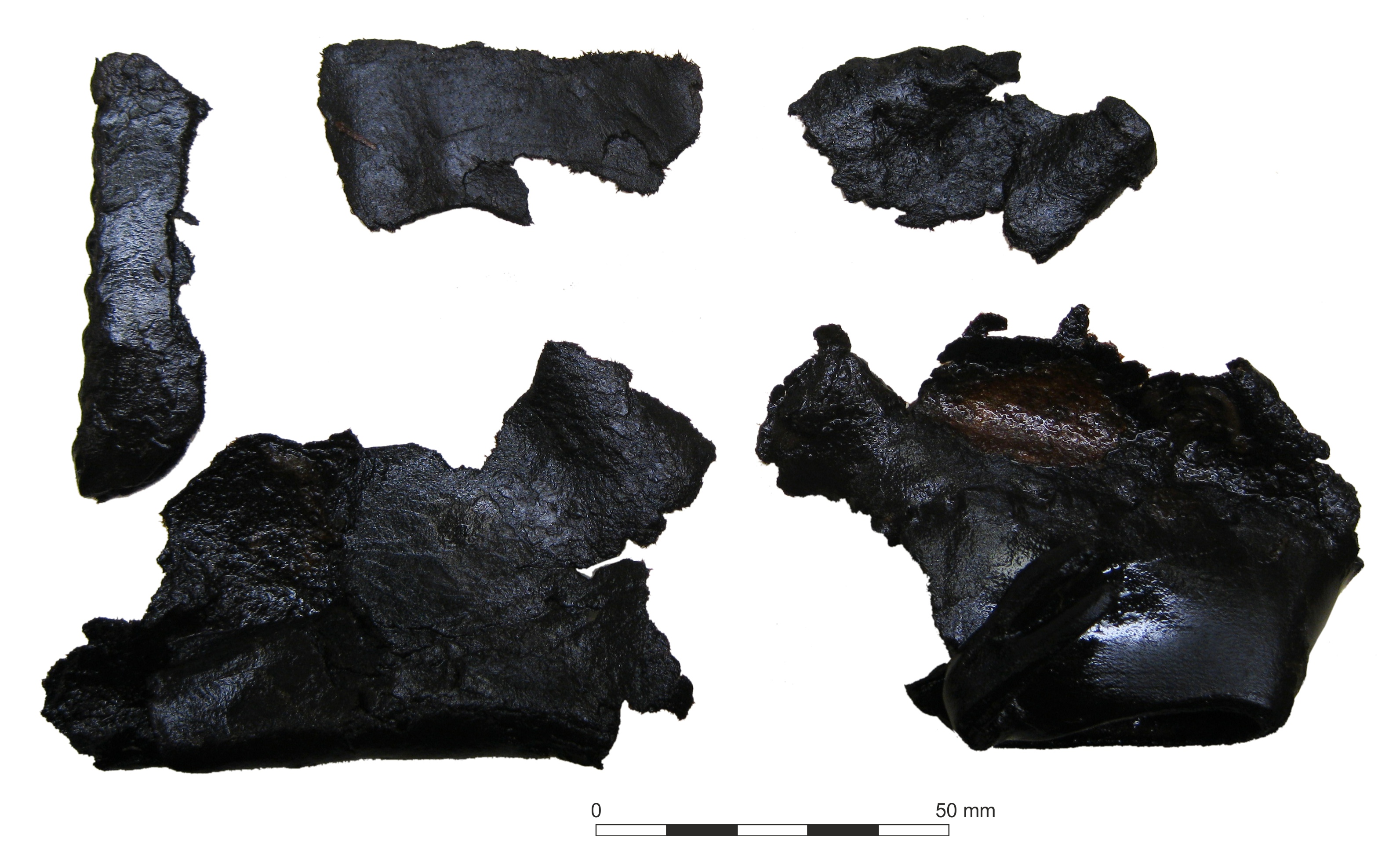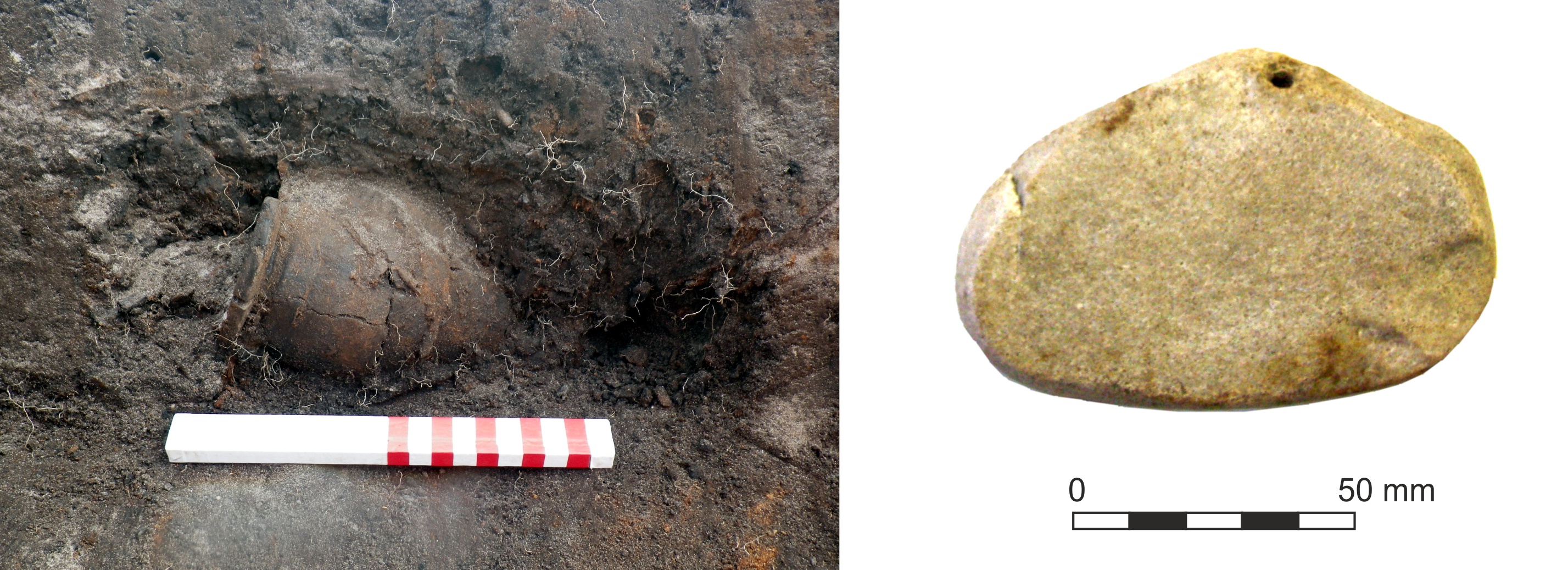
A team from Wessex Archaeology’s Sheffield office have recently completed the first phase of excavation works on the Finningley and Rossington Regeneration Route Scheme (FARRRS), near Doncaster, South Yorkshire. The excavation was targeted on the results of previous geophysics and trenching results, and known cropmark data, and focused on a Romano-British enclosure and surrounding ‘brickwork’ field system.
Inside the enclosure was a crude beam-slot structure with an internal working area, from which a leather ‘boot’ was recovered. The closed boot is typical of those found in places with a surrounding wetland environment, such as Vindolanda. Once the fills of the working area have been assessed we may know more about its function.
The fills of the surrounding enclosure ditch contained a complete probable TYPE E lid seated jar, from the Blaxton, Rossington Bridge or Cantley Kilns, dating between AD 140 and 180 (below). An unusual perforated stone was also recovered, which may have been used as a weight of some description.

An area targeted on the surrounding field system only produced a complete everted rim beaker from either the Rossington Bridge or Blaxton Kilns, which is likely to date from AD 140 to the early 200s. The rim of the beaker appears to have been purposefully removed prior to deposition, but its fills contained no evidence of its function (left).